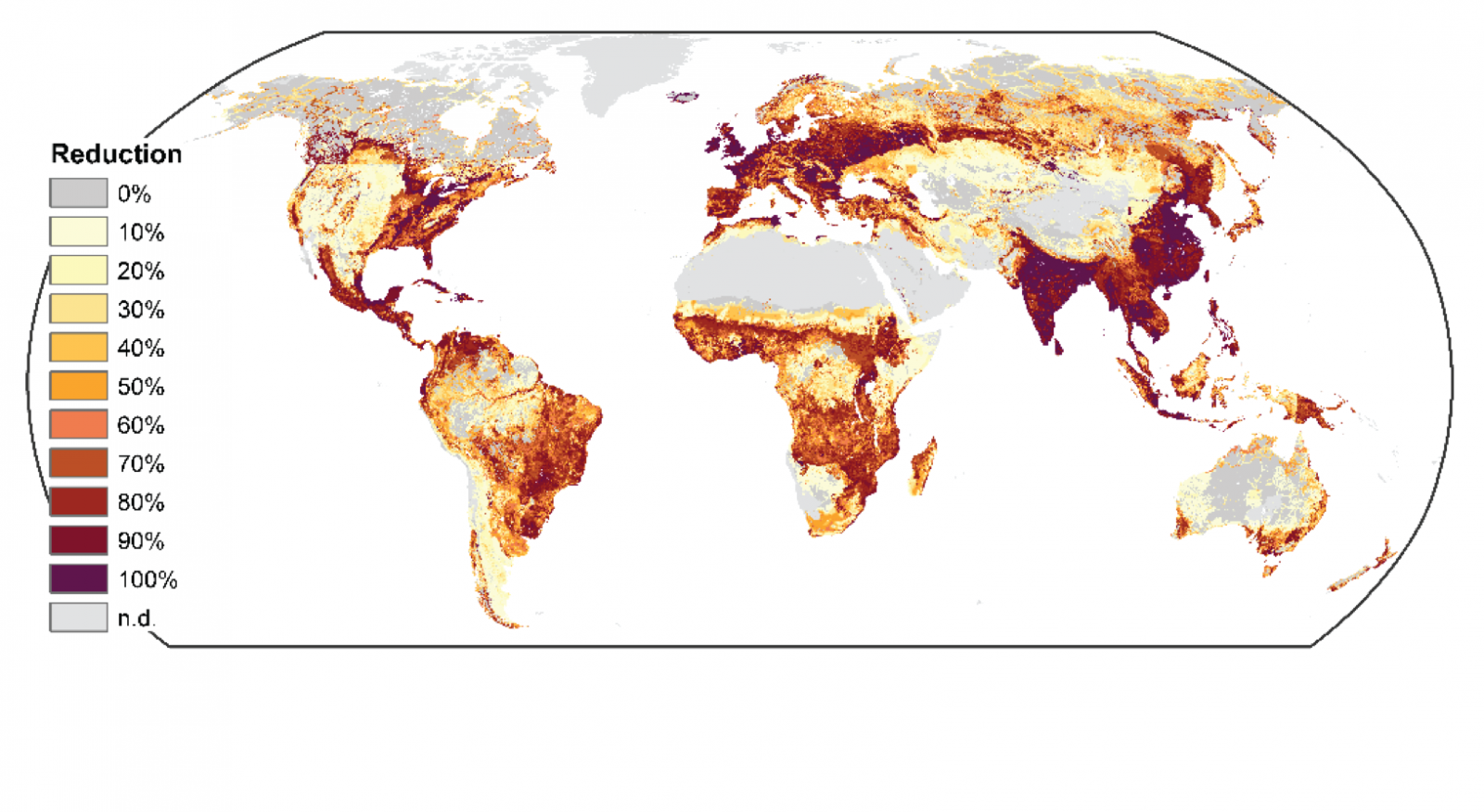How much carbon does the planet’s vegetation hold?
Trees and other vegetation are the planet’s carbon storage closet – absorbing and releasing carbon dioxide and other greenhouse gases in an ongoing cycle. But just how big is that potential? A study from December has calculated that the world’s vegetation, from Amazonian rainforests to Eurasian grasslands, may hold about 450 billion tonnes of carbon today.
It’s a colossal capacity, roughly equal to the amount of carbon that humans would pump into the atmosphere over 50 years at current rates of emission. But the study published in Nature also highlights what the world has lost: Researchers crunched the numbers and discovered that the planet’s vegetation could store a lot more carbon, roughly double the amount, if we returned to the forests and grasslands from before the rise of humankind.
That makes ecosystems potentially critical tools in the race against climate change. But the results also suggest that human actions can easily disturb such carbon “sinks,” says lead author Karlheinz Erb, a professor at the Institute of Social Ecology in Vienna, part of the University of Klagenfurt. Policies that use up the world’s vegetation – even for well-meaning reasons like producing biofuels – might do a lot of harm in the long-run.
“We have to understand that biomass is a very scarce resource. It is not something that comes for free,” Erb says. “It seems intuitive that when we use biomass, we wait a little, and it grows back. But in a forest, when we use biomass, we don't wait a little, we wait hundreds of years.”
Karlheinz Erb is a Fellow of the Global Land Programme, a global research project of Future Earth.

Maps of potential and actual carbon storage in global vegetation (in grams per square metre). Graphic: Erb et al., Nature 2017
Carbon sink
Across the globe, plants from banana trees to elephant grasses pull carbon dioxide out of the atmosphere, using that carbon to grow their leaves and roots. The cumulative effect of this storage is huge: Some tropical rainforests, such as patches of South America, can store more than 20,000 grams of carbon in just one square metre of vegetation. And it’s a capacity that many scientists see as an opportunity to offset some of humanity’s greenhouse gas emissions. Nations from Bolivia to Namibia have made halting deforestation, or even planting new forests, part of their plans to meet the Paris Agreement on climate change.
For those plans to work, however, researchers need to get a grasp the storage capacity of the world’s plants – not just how much carbon they hold today, but how much they could, theoretically, hold. In other words, how much carbon did the world’s vegetation store before humans invented agriculture?
To answer that question, Erb and his colleagues assembled a series of existing datasets that use satellite observations to record the state of the planet’s vegetation. By combining that data with other ecological information, the team estimated that the globe’s ecosystems could potentially hold about 916 billion tonnes of carbon. Humanity’s actions, the group concluded, from clear-cutting forests to introducing cows to wild grasslands, have cut the carbon storage capacity of global vegetation by half.
By restoring lost forests, humans could absorb massive volumes of carbon dioxide from the atmosphere. But Erb urges caution, noting that the areas where many forests once stood are now occupied by cities and farms that people depend on.
“When it comes to restoring, for example, tropical forests to realistic stocks, the potentials are much smaller,” Erb says. “One has this potential only once. Humans can use forest restoration to buy us some time, but, nevertheless, we need a fundamental restructuring of society where we don’t rely on fossil fuels.”

Map showing the estimated impact of humans on the carbon storage capacity of vegetation. Graphic: Erb et al., Nature 2017
What about biofuels?
What surprised Erb was how humans had transformed the world’s carbon sink. Clear-cutting forests can take its toll, but so can seemingly less destructive actions like managing woodlands for timber production – in other words, people cut down a few trees, but leave the rest standing. Based on the team’s estimates, those sorts of actions, in which humans modify ecosystems for their own uses, account for nearly half of the planet’s lost carbon storage potential from vegetation.
Management practices “might seem to be subtle, but on the global scale, they’re actually not subtle at all,” Erb says. “They have the same strength as those more visible changes like deforestation.”
And that can have large implications for a range of national policies. The European Union has encouraged the use of biofuels – a type of energy derived from tree trunks and other vegetation. That might sound like a good idea: Replace fossil fuels with energy that can grow back over time. But Erb says such policies could substantially disrupt the ability of forests to hold onto carbon, offsetting the positive impacts of biofuels.
“We show that a trade-off is emerging,” Erb says. “We can use biomass for generating bionergy and substitute for fossil energy. But at the same time, we must not neglect that by using biomass out of an ecosystem, we disrupt the ecosystem.”
Erb says that his team’s results show that, when it comes to storing carbon, one forest is not just as good as another. “We have to move beyond just saying, ‘yes, we have a protected forest,’ and only thinking about how many square kilometres it occupies,” he says. “We also have to protect – explicitly – our carbon stocks.”
DATE
January 31, 2018AUTHOR
Daniel StrainSHARE WITH YOUR NETWORK
RELATED POSTS
Spotlight on LMICs – Tired of Breathing in Pollutants? Time for Better Fuel Economy and Vehicle Standards
Future Earth Taipei Holds 2024 Annual Symposium
Spotlight on LMICs – The Future’s Juggernaut: Positioning Research as Anchors for Environmental Health